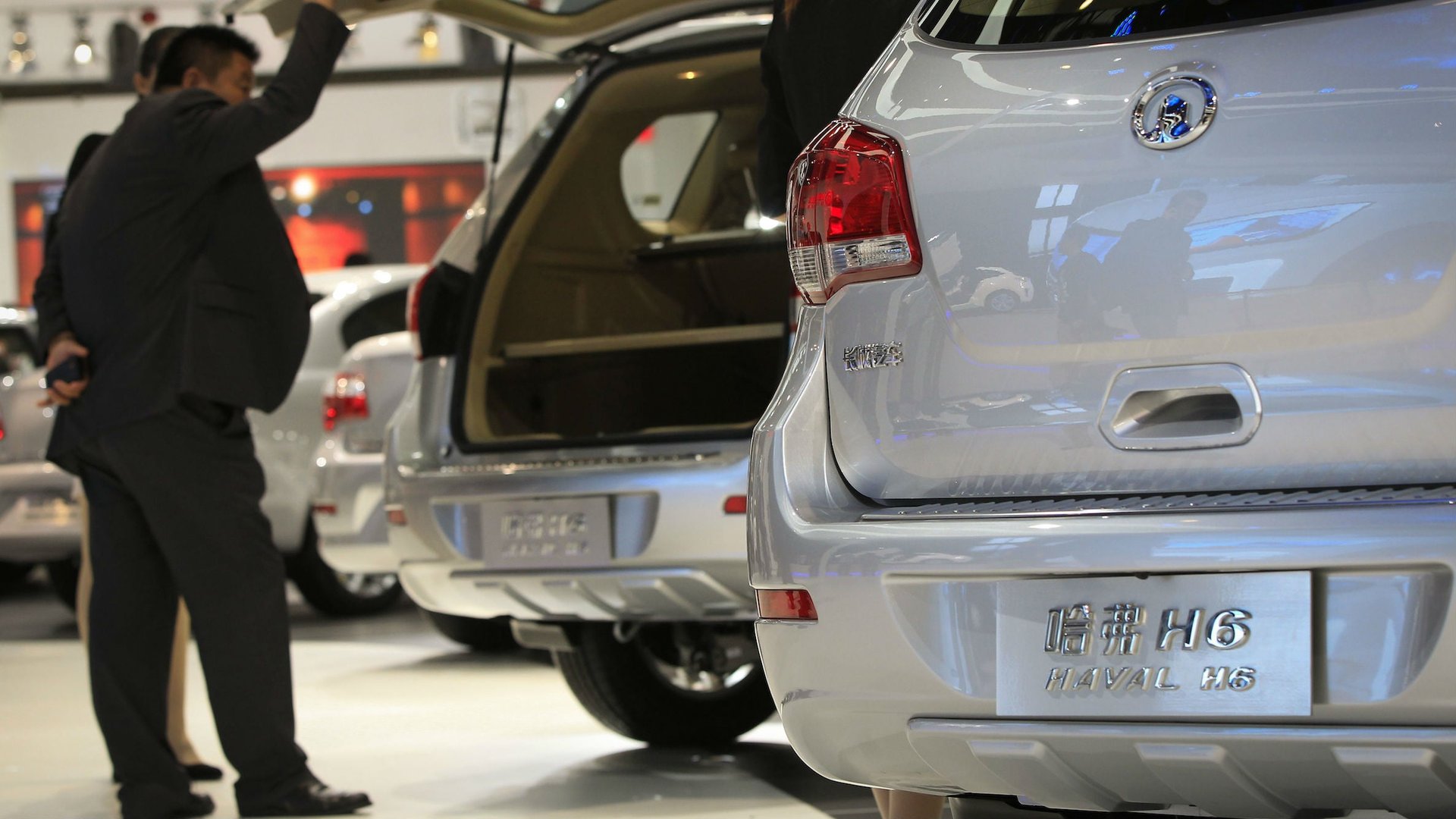The “Chinese dream” now means driving a SUV (but it can’t last)
Foreign and Chinese automakers are clamoring to fulfill China’s growing appetite for clunky, expensive sport utility vehicles. SUVs are the fastest growing segment of the country’s massive auto market, with deliveries up 26% for the first 11 months of the year, in contrast to 7% growth for regular passenger vehicles, according to the China Association of Automobile Manufacturers. But there’s reason to believe the trend for these big cars in China can’t last forever.


Foreign and Chinese automakers are clamoring to fulfill China’s growing appetite for clunky, expensive sport utility vehicles. SUVs are the fastest growing segment of the country’s massive auto market, with deliveries up 26% for the first 11 months of the year, in contrast to 7% growth for regular passenger vehicles, according to the China Association of Automobile Manufacturers. But there’s reason to believe the trend for these big cars in China can’t last forever.
Today, General Motors announced that it would expand operations in China by 25% (about 40 dealers) and focus on selling its SUV, the Buick Encore. Wealthy Chinese families are buying SUVs more for prestige than utility, and often as their second cars. At the Beijing Auto Show in April, luxury SUVs were introduced by Maserati, Bentley and Lamborghini. Ford also plans to sell three more models in China next year. And it’s worth noting that China is Porsche’s largest market for its SUV, the Porsche Cayenne.
Much like America in the 1950s, cars have become part of the “Chinese dream,” for the country’s expanding middle class. Mothers use them to cart around groceries (not so much their kids because of the one-child policy). For men, owning a car has become a near-prerequisite for serious courting but SUV adds an extra edge, alluding to adventure. In one Chinese blogger’s words, “In every man’s heart is an SUV.” The post was accompanied by photos of SUVs along a mountain path and by an ocean.
But SUVs in China are becoming a problem of space, pollution and gas guzzling. While China may be roughly the size of the US, its population is about four times as large and the number of cars its population owns are growing faster than expanding road space, according to a 2010 report in the Journal of Transport and Land Use. In 2006 there were just 16,000 km of expressways in China (about 11,000 miles) and by 2020 there will be 100,000 km, according to state media. Unlike in the US, car ownership is concentrated in cities, making traffic congestion and pollution a top a quality-of-life concern for Chinese residents.
An economic slowdown combined with government efforts to tamp down car ownership overall are slowing the trend. Beijing, Shanghai, and Guangzhou cap the number of new registrations for cars, needed to drive, and divy up an amount through lotteries and auctions. In Shanghai, one resident bid about ¥70,000 ($11,000) for a license plate over the weekend. The growth of SUV sales will be 13% annually between 2011 and 2020, a report in November from consultancy firm McKinsey says, a good bit lower than the nearly 20% rate in 2011 and 33% in 2010.